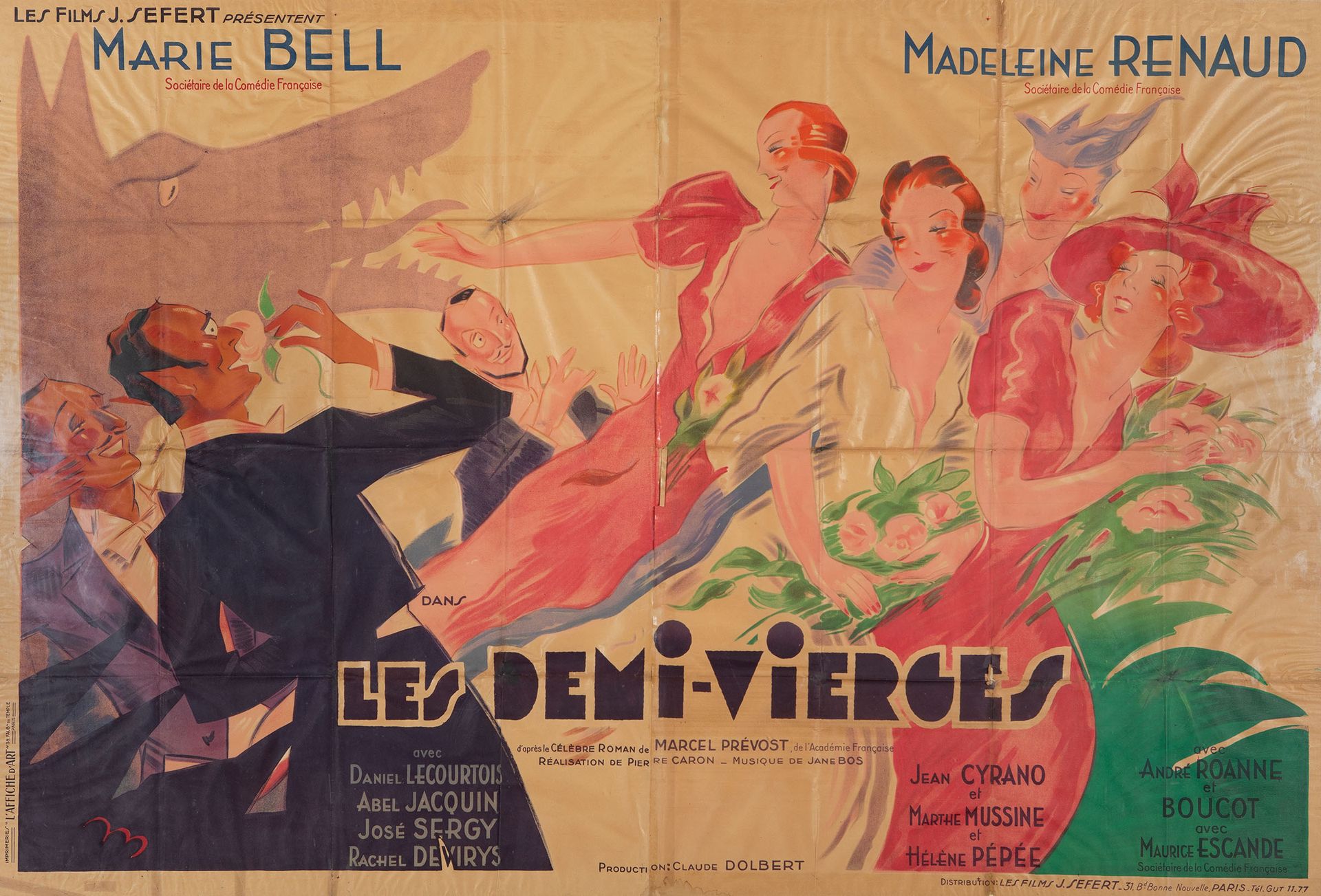Description
French school, ca.1935._x000D_ "Les Demi-vierges._x000D_ Lithograph poster._x000D_ Sizes: 159 x 233 cm; 162,5 x 236,5 cm (frame)._x000D_ Great lithographic poster destined to the promotion of the film "Les Demi-vierges", a clear reference of the French cinema of the 40's released for the first time in France in 1936, from the original novel by Marcel Prévost. It shows the stylistic and conceptual affiliation with Art Deco, in vogue in the avant-garde of the 1930s, although without reaching the schematic simplification of the exponents of this artistic movement. Highly decorative and original, this poster shows how the early cinematographic films, together with the French theatre and the Russian ballet, marked the development of the Art Deco style. The slender figures, graceful movement and dynamic composition of the leading ladies make this piece a clear example of this distinguished and popular style. Art Deco was an artistic style that emerged in 1920 and whose influence continued until the middle of the 20th century in some countries. It sought to renew all disciplines, defending the value of the technological progress of the time and the new sciences of the day. The film "Les Demi-vierges", for its part, narrates the damage that Paris and modern education, at the end of the 19th century, did to young French girls. The term demi vierge, which eventually found its way into common parlance, signified at the time the condition of a liberated but still virgin girl.
32
French school, ca.1935._x000D_ "Les Demi-vierges._x000D_ Lithograph poster._x000D_ Sizes: 159 x 233 cm; 162,5 x 236,5 cm (frame)._x000D_ Great lithographic poster destined to the promotion of the film "Les Demi-vierges", a clear reference of the French cinema of the 40's released for the first time in France in 1936, from the original novel by Marcel Prévost. It shows the stylistic and conceptual affiliation with Art Deco, in vogue in the avant-garde of the 1930s, although without reaching the schematic simplification of the exponents of this artistic movement. Highly decorative and original, this poster shows how the early cinematographic films, together with the French theatre and the Russian ballet, marked the development of the Art Deco style. The slender figures, graceful movement and dynamic composition of the leading ladies make this piece a clear example of this distinguished and popular style. Art Deco was an artistic style that emerged in 1920 and whose influence continued until the middle of the 20th century in some countries. It sought to renew all disciplines, defending the value of the technological progress of the time and the new sciences of the day. The film "Les Demi-vierges", for its part, narrates the damage that Paris and modern education, at the end of the 19th century, did to young French girls. The term demi vierge, which eventually found its way into common parlance, signified at the time the condition of a liberated but still virgin girl.
You may also like
